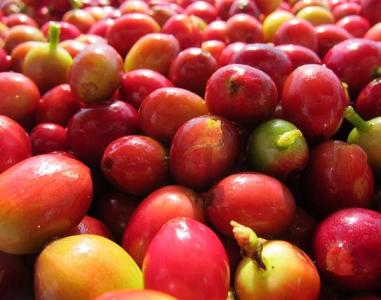How many Arabica species in Ethiopia have their names?
Since ancient times, Ethiopians have planted, harvested, treated and cooked by hand. In the 1970s and 1980s of industrialization, the country also benefited from misfortune because it promoted socialism and retained small-scale production under the prohibition of the military regime Derg. Until modern times, the planting mode of farmers is also quite primitive. In the western forest areas (Kaffa, Illubabor), they will use local materials to harvest coffee fruits (Forest Coffees) from wild fruit trees. They don't fertilize or cut tree trunks, so their production capacity is very low. In the Semi Forest Farming model, farmers move trees from the forest to farmland and irrigate them with organic manure. The most common Garden farming is family farming, which is planned by the nursery. More than half of farmers also operate in the most common model in Africa.
After harvest, farmers will sell the fruit to nearby treatment plants. However, because Egypt has registered the production areas (Yirgacheffe, Sidamo, Harar), the law stipulates that farmers in the same area can only be sold to the treatment plants in the same area. The price is also regulated by the government. With the exception of a few accredited cooperatives, all coffee is mixed and auctioned by the Commodity Exchange (ECX). For example, the exchange code WSDB coffee, is the first-class and second-class water wash Sidamo. But this shipment is actually a mixture of Aleda, Wondo, Amaro, Dale, Wensho and other nine producing areas in Sidamo province! Under the tide of boutique products that like to "find the root", the approach of the authorities is going against the trend.
Kaffa is the cradle of Arabica coffee. Adding up to only a few hundred varieties (congenital or derived) from countries around the world, there are tens of thousands of species in this treasure house, most of which are still unclassified. Heirlooms (original species) is the unique name of Ethiopia, as if to tell the world that its varieties are all-inclusive, with only one word. In addition to the ancient species Typica and Geisha, farmers are also named after their own distinctions, such as the "Sidamo species" and the "Yegashev species". Jimma Agricultural Research Center under the Ministry of Agriculture is cultivated under the code name. For example, Ninety Plus's Kemgin coffee comes from the variety codes 74110 and 7487.

Important Notice :
前街咖啡 FrontStreet Coffee has moved to new addredd:
FrontStreet Coffee Address: 315,Donghua East Road,GuangZhou
Tel:020 38364473
- Prev

Introduction to the grading system of Bancimagi Coffee beans in Ethiopia
Although the flavor of Bancimaji Gesha estate is different from that of Panamanian Geisha, it is still worth tasting, because tonality is very rare in Ethiopia, and the ever-changing flavor of spices and fruits is worth trying. The story behind the coffee is even more shocking. In short, it is worth tasting! The Ethiopian sun is sour and sweet, and the flavor of the complex ripe fruit is a little bit.
- Next

The inelegant sour taste of Indonesia's aged Mantenin coffee beans are described in detail.
The aged Agedmandheling is as sweet as honey. The successful old bean has worn away Manning's inelegant sour taste. The sour ingredients are ripe and converted to sugar, making the coffee more round and sweeter to drink. The failed old Mantenin is like a coffee zombie, it is difficult to import Mantenin coffee beans with large granules and hard beans, and it is easy to have defects in the process of planting.
Related
- Detailed explanation of Jadeite planting Land in Panamanian Jadeite Manor introduction to the grading system of Jadeite competitive bidding, Red bid, Green bid and Rose Summer
- Story of Coffee planting in Brenka region of Costa Rica Stonehenge Manor anaerobic heavy honey treatment of flavor mouth
- What's on the barrel of Blue Mountain Coffee beans?
- Can American coffee also pull flowers? How to use hot American style to pull out a good-looking pattern?
- Can you make a cold extract with coffee beans? What is the right proportion for cold-extracted coffee formula?
- Indonesian PWN Gold Mandrine Coffee Origin Features Flavor How to Chong? Mandolin coffee is American.
- A brief introduction to the flavor characteristics of Brazilian yellow bourbon coffee beans
- What is the effect of different water quality on the flavor of cold-extracted coffee? What kind of water is best for brewing coffee?
- Why do you think of Rose Summer whenever you mention Panamanian coffee?
- Introduction to the characteristics of authentic blue mountain coffee bean producing areas? What is the CIB Coffee Authority in Jamaica?

